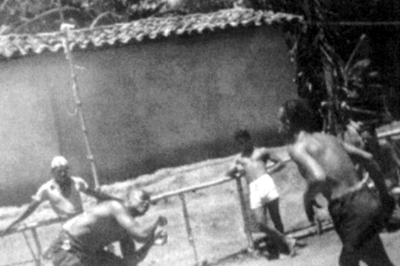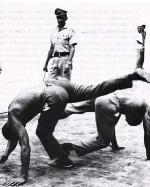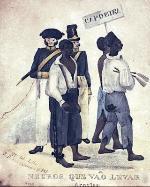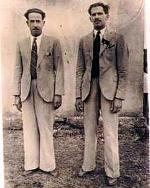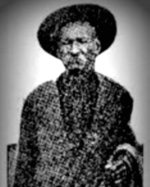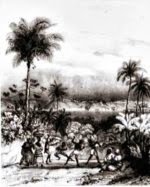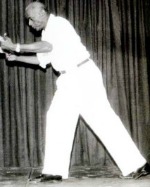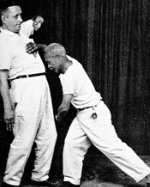The History of Capoeira
What is Capoeira?
Capoeira is a Brazilian martial art that combines
fighting techniques with flamboyant dance-like moves.
While it does look spectacular, it should not be underestimated as many of the techniques are deadly when applied with the right intent.
While it does look spectacular, it should not be underestimated as many of the techniques are deadly when applied with the right intent.
Talk the Talk
Practitioners of capoeira are known as capoeiristas
and when taking part in a contest, they are known as players.
This reflects the art’s move away from a form of street fighting into a culturally acceptable sport.
This reflects the art’s move away from a form of street fighting into a culturally acceptable sport.
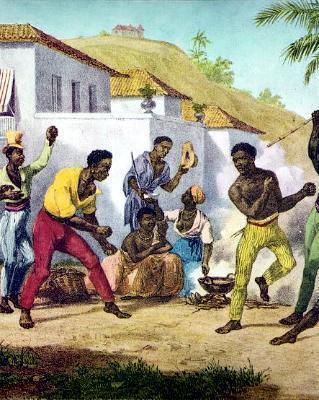 The roots of capoeira history are unclear and hotly debated by martial arts historians. Some believe the dance-like techniques of the flamboyant art originated in Africa and arrived in Brazil with the slaves who were taken to the country by Portuguese conquistadores from the start of the sixteenth century. However others maintain while some of the moves themselves may have originated in Africa, the art was formed by the slaves after they arrived in the New World.
The roots of capoeira history are unclear and hotly debated by martial arts historians. Some believe the dance-like techniques of the flamboyant art originated in Africa and arrived in Brazil with the slaves who were taken to the country by Portuguese conquistadores from the start of the sixteenth century. However others maintain while some of the moves themselves may have originated in Africa, the art was formed by the slaves after they arrived in the New World.The Criminalization of Capoeira
What is known is that capoeira was developed into the art form we know today in Brazil by slaves who wished to hide from their masters the fact that they were practising and learning martial arts. Needless to say that authorities would frown on such practices, so the fighting moves were hidden in dance to protect its practitioners from punishment.In 1888, slavery was brought to an end in Brazil bringing about a period of reconstruction that saw mass unemployment and poverty. However, for some of the best martial arts experts, the period brought new opportunities to excel and even gain legendary status in the country’s criminal underworld.
Colourful characters such as Mestre Manduca da Praia, known as the Elegant Capoeira Fighter and Mestre Besouro Manganga, the Invincible Capoeira Fighter, emerged but as capoeira had become synonymous with crime, it was banned. Those caught practising the art would be severely punished and capoeirista were hunted down until capoeira had nearly vanished completely.
The Legitimization of Capoeira
Then in the early twentieth century and despite the legalities, Manoel dos Reis Machado, commonly known as Mestre Bimba, managed to demonstrate the art to high-ranking dignitaries including the President of Brazil. Bimba added a moral code and consolidated the techniques into what became known as the Regional System, and in the process so impressed the President that the history of the martial art was changed forever. Capoeira’s place in Brazilian culture became set in stone and what is probably the most flamboyant martial art in the history of fighting, was finally made legitimate in the eyes of the authorities and the general public of the country where it was developed.Written by Andrew Griffiths – Last updated 16/06/2023. If you like
what you see, consider following the History of Fighting on social media.
Further Reading:
About Capoeira History. [Internet]. 2010. Origens Do Brasil. Available from: http://www.origensdobrasil.co.uk/history.php [Accessed November 5, 2012].Capoeira: From Crime to Culture. [Internet]. 2012. Library of Congress. Available from: http://blogs.loc.gov/law/2012/10/capoeira-from-crime-to-culture/ [Accessed November 6, 2012].
Capoeira History. [Internet]. 2012. Rensselaer Polytechnic Institute. Available from: http://capoeira.union.rpi.edu/history.php [Accessed November 5, 2012].
What is Capoeira? [Internet]. 2012. Princeton University. Available from: http://www.princeton.edu/~capoeira/ln_abt.html [Accessed November 6, 2012].
More Capoeira History
The Roots of Capoeira
The exact roots of capoeira are unknown and largely unstudied. This article explores the possible beginnings of capoeira history and looks at how and why it became a part of the culture amongst Brazilian slaves from the sixteenth century onward.
The exact roots of capoeira are unknown and largely unstudied. This article explores the possible beginnings of capoeira history and looks at how and why it became a part of the culture amongst Brazilian slaves from the sixteenth century onward.
Brazil’s Criminal Underworld
From the late 19th century, the criminal underworld of Brazil saw its numbers dramatically rise when slavery legally came to an end in 1888. Many skilled fighters became powerful and as many of them were capoeirista, the martial art became synonymous with criminal gangs.
From the late 19th century, the criminal underworld of Brazil saw its numbers dramatically rise when slavery legally came to an end in 1888. Many skilled fighters became powerful and as many of them were capoeirista, the martial art became synonymous with criminal gangs.
Mestre Manduca da Praia – The Elegant Capoeira Fighter
Mestre Manduca da Praia, known as ‘The Elegant Capoeira Fighter’ was a nineteenth century Brazilian martial artist who was not only a ferocious warrior, but managed to maintain his standing as a respectable business man with in his community.
Mestre Manduca da Praia, known as ‘The Elegant Capoeira Fighter’ was a nineteenth century Brazilian martial artist who was not only a ferocious warrior, but managed to maintain his standing as a respectable business man with in his community.
Jose Antonio do Nascimento
Jose Antonio do Nascimento was one of the best fighters of the nineteenth century. His skills earned him a fearsome reputation and his size and prowess earned him the nickname Nascimento Grande (Big Birth).
Jose Antonio do Nascimento was one of the best fighters of the nineteenth century. His skills earned him a fearsome reputation and his size and prowess earned him the nickname Nascimento Grande (Big Birth).
Mestre Besouro Manganga
Besouro Manganga was such a prolific capoeira fighter that people believed him to have magical powers (known as corpo fechado). His agility and nimbleness helped him avoid capture time and time again, and even when cornered by police, he would usually come out on top.
Besouro Manganga was such a prolific capoeira fighter that people believed him to have magical powers (known as corpo fechado). His agility and nimbleness helped him avoid capture time and time again, and even when cornered by police, he would usually come out on top.
Mestre Bimba
Mestre Bimba is important in capoeira history because of the role he played in legitimizing the art. By introducing a code of ethics, set training methods and a number of new techniques, he helped change capoeira from an illegal discipline associated with crime, to an iconic cultural pastime.
Mestre Bimba is important in capoeira history because of the role he played in legitimizing the art. By introducing a code of ethics, set training methods and a number of new techniques, he helped change capoeira from an illegal discipline associated with crime, to an iconic cultural pastime.
Angola Capoeira
The Angola style of capoeira is one of the two main systems of the art and was introduced in 1942 by Mestre Pastinha. Unlike the other style, Regional capoeira, it focuses the individual development of each capoeirista as opposed to practicing set sequences and training methods and is more akin to the type of capoeira practiced prior to the 20th century.
The Angola style of capoeira is one of the two main systems of the art and was introduced in 1942 by Mestre Pastinha. Unlike the other style, Regional capoeira, it focuses the individual development of each capoeirista as opposed to practicing set sequences and training methods and is more akin to the type of capoeira practiced prior to the 20th century.
The images on this site are believed to be in the public domain, however, if any mistakes have been made and your copyright or intellectual rights have been breeched, please contact andrew@articlesonhistory.com.

